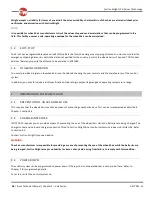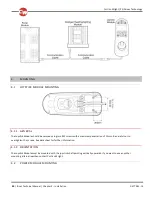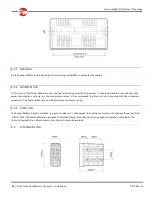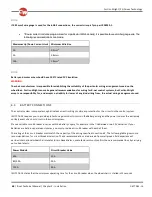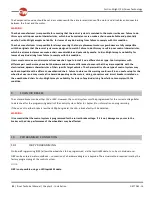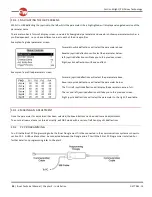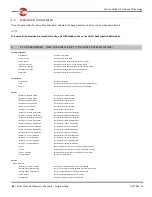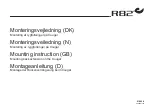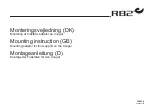
Curtiss-Wright | PG Drives Technology
SK77981-14
50 | R-net Technical Manual | Chapter 2 - Installation
7
BATTERIES
The control system is designed for operation with 24V lead acid batteries. The batteries may be wet or gel electrolyte types.
Contact the manufacturers for advice on battery selection.
7.1
BATTERY CHARGIN G
The R-net system can support two methods of charging, Off- Board and On-Board.
An On-Board Charger should be connected to the Power Module via the OBC connector, refer to the wiring diagram of the
Power Module for pin details and to the section On-Board Charger Connections for details of maximum current.
An Off-Board Charger can be connected through a Charger Socket found on either a Joystick Module or the Omni. The charging
socket is Neutrik 3 pin type NC3FPP or equivalent, and the maximum charging current is 12A rms. Only chargers fitted with
Neutrik NC3MX plugs should be connected into the Joystick Module.
CAUTION:
The maximum permissible charging current for both methods is 12A rms.
To prevent the wheelchair from driving whilst the charger is connected, pin 3 must be linked to pin 2 inside the charger’s plug.
WARNING:
Do not exceed the maximum charging current of 12A rms. Always use an Off-Board Charger fitted with a Neutrik NC3MX
plug. Failure to observe these conditions could result in poor contact resistance in the charger connector resulting in
overheating of the charger plugs. This presents a potential burn hazard for the user. Curtiss-Wright accepts no liability for
losses of any kind arising from failure to comply with this condition.
Ensure that the charger plug pins are of the correct polarity to be compatible with the pin polarity shown on the control
system’s specific data sheet. Failure to observe this condition could result in a burn hazard or fire hazard. Curtiss-Wright
accepts no liability for losses of any kind arising from failure to comply with this condition.
Do not disconnect batteries or open-circuit the circuit breaker while charging is in progress. Failure to observe this condition
could result in a burns hazard or fire hazard. Curtiss-Wright accepts no liability for losses of any kind arising from failure to
comply with this condition.
Examine all electrical appliances intended for use with the wheelchair, including the battery charger, regularly for damage,
especially the cord, plug and enclosure. If the appliance is damaged, it must not be used until it has been repaired. Curtiss-
Wright accepts no liability for losses of any kind arising from failure to comply with this condition.
8
DRIVE MOTORS
The control system is designed to be connected to permanent magnet DC motors, fitted with suitable gearboxes and solenoid
brakes.
In order to optimize the performance of the wheelchair, the control system must be matched to the motor terminal impedance.
This matching is implemented by programming the control system. The parameter for adjustment is Compensation. Refer to
Chapter 3.



